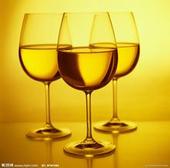
Before you down that pint,check the shape of your glass—you might be drinking more beer than you realize.According to a new study of British beer drinkers,an optical illusion caused by the shape of a curved glass can dramatically increase the speed at which we swill.
Binge drinking is a growing problem in the United Kingdom,particularly among young people,says experimental psychologist Angela Attwood of the University of Bristol.The rise in drinking and associated criminal activity is so severe,she says,that"people are getting more and more reluctant to venture into city centers at night."Aside from increases in crime,binge drinking is a public health risk:according to the World Health Organization,the harmful use of alcohol—defined as drinking that damages health and has negative social repercussions—results in 2.5 million deaths per year worldwide and is the third largest factor in the global burden of disease.Although WHO describes legislative solutions such as raising the price of alcohol and increasing the drinking age as effective interventions,such measures are so unpopular that many governments are reluctant to implement them.
Given the difficulty of controlling drinking with legislation,Attwood and her colleagues hope to curb it through education.People don't always realize how much or how fast they're drinking,she explains.For example,a previous study by a team of researchers at Queen Margaret University in the United Kingdom found that the mean alcohol content in a"usual"single drink poured by subjects was actually twice that of the standard U.K.alcohol"unit"used to measure consumption.Attwood suspected that the shape of a beer glass,which can give the appearance of different volumes to the same amount of liquid,might also distort perception of how much alcohol is being consumed.
To test the hypothesis,she and her colleagues randomly divided 160 young,healthy people—students and faculty members of the University of Bristol,as well as some members of the general public—into eight groups.It wasn't difficult to recruit participants,Attwood says."People tend to be quite happy to get free lemonade or beer."Using the standard WHO test for hazardous drinking,called AUDIT,the researchers screened the participants to include only"social beer drinkers,"not alcoholics.They assigned each group to drink either about 177 milliliters or about 354 milliliters of lager or soft drink from straight or curved glasses.While the participants drank,they watched a nature documentary deemed emotionally neutral,so that they wouldn't be"sitting there with nothing to do but drink,"Attwood says.The team videotaped the drinkers over two sessions,disguising the real purpose of the test with a fake word search task at the end of each session.
After watching video of both sessions and recording how much time it took for the drinkers to finish their beer or sodas,Attwood's team found that one group consistently drank much faster than the others:the group drinking a full glass of lager out of curved flute glasses.In a paper published this month in PLoS ONE,the team reports that whereas the group with straight glasses nursed their 354 milliliters of lager for about 13 minutes,the group with the same amount of beer served in curved glasses finished in less than 8 minutes,drinking alcohol almost as quickly as the soda-drinkers guzzled their pop.However,the researchers observed no differences between people drinking 177 milliliters of beer out of straight versus fluted glasses.
Attwood believes that the reason for the increase in speed is that the halfway point in a curved glass is ambiguous.Social beer drinkers,she says,naturally tend to pace themselves when drinking alcohol,judging their speed by how fast they reach half-full.Another experiment in which participants were asked to judge different levels of fluid in photographs of straight and curved glasses showed that people consistently misjudge the volume in fluted glasses,Attwood says.A simple solution to this problem would be to mark beer glasses with the accurate halfway point,she says."We can't tell people not to drink,but we can give them a little more control."
Jan Gill,an experimental psychologist at Queen Margaret University who helped establish that people have a tendency to overpour,agrees that Attwood and colleagues have shown an interesting effect of glass shape on how fast people drink.However,several aspects of the study give her pause.For example,she thinks that the inclusion of people who drink up to 50 units of alcohol per week—roughly 12 liters of 3.5 percent to 4 percent strength beer—is pushing the limit on what constitutes a"social beer drinker."At that level of consumption,she thinks people will drink quickly no matter what because they're"just drinking to get drunk."





